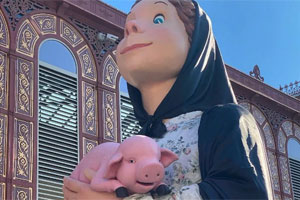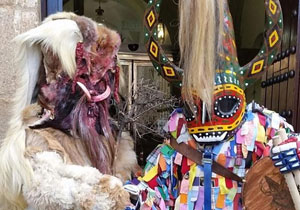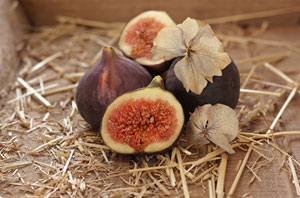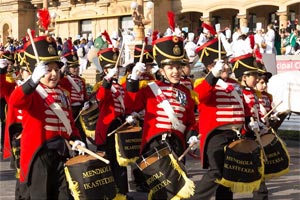Xativa Fair
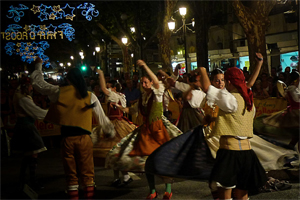
What is the Xativa Fair?
The Xativa Fair is an ancient celebration that takes place in the Valencian city of Xativa. Originally dedicated to livestock, this festival was established by King James I in 1250 in the month of November. Currently, it is celebrated between August 15th and 20th and has evolved into an offering of leisure and culture, leaving behind its livestock focus.
The festival has been declared of National Tourist Interest.
With the honor of being the oldest fair in the Valencian Community, the August Fair presents a variety of traditional events such as the "Canto de Albaes" (a traditional Valencian song), the Festival de la Cançó (Song Festival), and the fair lunch with sardines, peppers, and olives.
In addition to the sale of animals and typical products, this fair offers a full program of activities that includes concerts, theater, contests, sports competitions, regional folklore, fireworks, the release of young bulls, and bullfights. The Xativa Fair is a popular event that attracts locals and visitors every year, becoming an emblematic celebration of the region.
For more information about the festive program each year, consult the links provided in this article.
Highlights of the Xativa Fair
The Xativa Fair is a five-day event that transforms the streets and squares with fairground attractions, cultural activities, and shops. Although the presence of livestock has decreased, the essence of its origin remains with activities such as the shooting and pulling contest, the night of "Canto de Albaes," the motorcycle trophy, and the Festival de la Cançó, which celebrates local and Mediterranean music.
The city still remembers its ancient livestock fair, and the shooting and pulling contest, inspired by agrarian life, remains an attraction. The night of "Canto de Albaes," a traditional Valencian song, marks the beginning and the end of the celebrations in the "Plaça de Sant Pere."
Since 1951, the fair also hosts the "Trofeo de Velocidad" (Speed Trophy), one of the oldest and unique motorcycle competitions held on an urban circuit.
Recently, the Festival de la Cançó has been revived, highlighting local music and Mediterranean culture. Additionally, a medieval market with hundreds of traditional stalls is set up in the Alameda, offering artisanal products and other items.
The Xativa Fair is a celebration full of traditions and diverse activities for all tastes.
What to see in Xativa
Xativa is a historic city located in the province of Valencia, which boasts a rich cultural and architectural heritage. When visiting Xativa, there are interesting places worth seeing, including:
- Castle of Xativa: An impressive castle that offers a panoramic view of the city and its surroundings. It has a rich history dating back to the Iberian and Roman era and was a strategic location during the Spanish Reconquista.
- Old Town: Strolling through Xativa's old town is a real pleasure. Its cobbled streets and picturesque squares are filled with historic buildings, churches, and palaces that reflect the city's cultural wealth.
- Collegiate Church of Santa Maria: This 14th-century Gothic church is an architectural gem with its impressive facade and interior adorned with artworks and altarpieces.
- Church of San Francisco: A Gothic church built on the site of an ancient mosque, featuring a charming cloister and a Mudéjar-style bell tower.
- Almodi Museum: This museum houses an interesting collection of contemporary art, as well as temporary exhibitions and cultural events.
- Palace of Alarcon: An old Renaissance palace that now serves as a public library, where you can admire its beautiful courtyards and galleries.
- Señoría Park: An extensive park with well-kept gardens, fountains, and areas to relax, ideal for taking a stroll and enjoying nature.
- Borgia Route: Xativa is associated with the Borgia family, a powerful Renaissance dynasty. The Borgia Route allows you to discover places related to this family in the city.
- Historic fountains: In Xativa, you will find several historic fountains, such as the "Fuente Real" and the "Fuente de la Estrella," adding a touch of charm to the city.
- Local cuisine: You cannot leave without trying the delicious cuisine of Xativa, which includes typical dishes such as paella, fideuà, cured meats, and traditional sweets. (As detailed in the following point).
These are just some of the places and experiences you can enjoy in Xativa. The city offers a combination of history, culture, and natural beauty that will make your visit unforgettable.
What to eat in Xativa
Xativa, being located in the Valencia region, offers a delicious variety of typical dishes and local products that are worth tasting. Some of the culinary delights you can enjoy in Xativa are:
- Paella: As in the entire Valencia region, paella is an emblematic dish that you must try in Xativa. You can find different varieties, such as the traditional Valencian paella with chicken and rabbit or the seafood paella with a delicious mix of fresh seafood.
- Fideuá: Fideuá is a traditional dish in Spanish cuisine originating from the Valencian Community. It resembles paella, but instead of rice, short strands of thin pasta, such as fideuá or fine noodles, are used. It is cooked in a paellera with fresh seafood or fish and seasoned with saffron, paprika, tomato, and garlic. Often, ingredients like squid, shrimp, mussels, and aioli are added to enhance the flavor. Fideuá offers a delightful contrast of textures, with crispy noodles on the outside and soft on the inside, all infused with the flavors of the sea. It's a genuine Mediterranean delight highly appreciated for its simplicity and delicacy.
- Baked rice: El arroz al horno es un plato tradicional de la cocina mediterránea que combina arroz, carne y verduras en un delicioso guiso horneado. Se caracteriza por su textura tierna y jugosa, con un sabor reconfortante y aromático. Los ingredientes principales suelen ser arroz, costillas de cerdo, chorizo, tomate, pimiento, ajo y caldo. También se pueden añadir garbanzos, judías verdes o cualquier otro ingrediente que se desee. El arroz absorbe los sabores de los ingredientes mientras se hornea, creando una mezcla deliciosa y llena de sabor. Es un plato perfecto para compartir en ocasiones especiales o simplemente para disfrutar en familia.
- All i pebre: A dish of maritime origin that combines eels (or in some versions, other fish) with potatoes and a sauce made of garlic and paprika, all cooked in a clay pot.
- Esgarraet: A typical dish from the Valencian Community consisting of roasted red peppers and strips of marinated cod with olive oil and garlic.
- Olleta: A traditional Valencian stew made with chickpeas, pork meat, chorizo, blood sausage, and vegetables.
- Cured meats: The Valencia region is famous for its cured meats, such as
- Buñuelos y churros: You cannot leave Xativa without trying the delicious
- Sweets: Xativa offers a variety of traditional sweets, such as
- Wines and liquors: The Valencia region produces excellent wines and liquors, such as red and white wine, and the famous
These are just some of the culinary delights you can taste in Xativa. The city offers a rich gastronomic tradition that will allow you to enjoy authentic and unique flavors during your visit.


